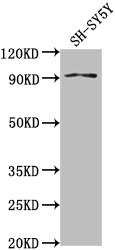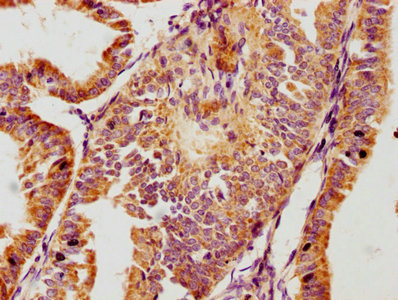Full Product Name
Rabbit anti-Homo sapiens (Human) GPLD1 Polyclonal antibody
Alternative Names
Glycoprotein phospholipase D antibody; Glycosyl-phosphatidylinositol-specific phospholipase D antibody; GPI-PLD antibody; GPI-specific phospholipase D antibody; GPIPLD antibody; GPIPLDM antibody; GPLD1 antibody; MGC22590 antibody; PHLD_HUMAN antibody; Phosphatidylinositol glycan specific phospholipase D antibody; Phosphatidylinositol-glycan-specific phospholipase D antibody; PI-G PLD antibody; PIGPLD antibody; PIGPLD1 antibody
Immunogen
Recombinant Human Phosphatidylinositol-glycan-specific phospholipase D protein (310-565AA)
Immunogen Species
Homo sapiens (Human)
Conjugate
Non-conjugated
The GPLD1 Antibody (Product code: CSB-PA009721LA01HU) is Non-conjugated. For GPLD1 Antibody with conjugates, please check the following table.
Available Conjugates
| Conjugate |
Product Code |
Product Name |
Application |
| HRP |
CSB-PA009721LB01HU |
GPLD1 Antibody, HRP conjugated |
ELISA |
| FITC |
CSB-PA009721LC01HU |
GPLD1 Antibody, FITC conjugated |
|
| Biotin |
CSB-PA009721LD01HU |
GPLD1 Antibody, Biotin conjugated |
ELISA |
Purification Method
>95%, Protein G purified
Concentration
It differs from different batches. Please contact us to confirm it.
Buffer
Preservative: 0.03% Proclin 300
Constituents: 50% Glycerol, 0.01M PBS, pH 7.4
Tested Applications
ELISA, WB, IHC
Recommended Dilution
| Application |
Recommended Dilution |
| WB |
1:1000-1:5000 |
| IHC |
1:20-1:200 |
Storage
Upon receipt, store at -20°C or -80°C. Avoid repeated freeze.
Lead Time
Basically, we can dispatch the products out in 1-3 working days after receiving your orders. Delivery time maybe differs from different purchasing way or location, please kindly consult your local distributors for specific delivery time.
Usage
For Research Use Only. Not for use in diagnostic or therapeutic procedures.








